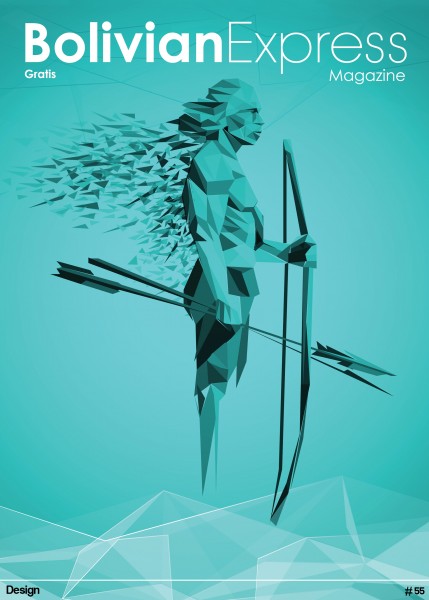
On a grey, windy morning in La Paz, I’m walking over to the local café in Sopocachi, thinking about coffee, art and
aesthetics. Do I order an espresso, a latte or a cappuccino? Like identity and self-expression, the choices you make
tend to reflect your own design aesthetic. I ordered the cappuccino.
‘Design can be art. Design can be aesthetics. Everything is design. Everything!’ said the late American graphic designer Paul
Rand. Can graphic design embrace art and aesthetics, too? You decide. Walk to la plaza del estudiante and take a look at the giant Photoshopped billboard of the Pope, Evo Morales and el Illimani. Everywhere you walk, you see design, sometimes hidden in the form of efficient visual communication (and, sometimes, contamination).
Rand’s claim that ‘everything is design’ may seem like a bit of hyperbole, but there is significant truth in those words. Design goes deeper than the visual and the aesthetic. Design is procedural, it is experiential. It is much more than the final visual result.
An idea becomes a reality through actionable tasks and processes designed for optimal experiences. Here in the cities of Bolivia, centuries of urban and architectural design have created unique experiences and processes for those of us who inhabit this place.
Good design can be sustainable and solve problems for communities. Fast-paced urban development in the city of Santa Cruz de la Sierra led city planners to prepare for exponential growth by designing four concentric ‘rings’. Designer and architect Cameron Sinclair reminds us, ‘When you design, you either improve or you create a detriment to the community in which you’re designing.’ What will urban planners implement next? The Bolivian Express will continue to report on and investigate the thriving future of Bolivia’s economic capital and fastest-growing city.
American graphic designer Paula Scher warns, ‘Be culturally literate, because if you don’t have any understanding of the world you live in and the culture you live in, you’re not going to express anything to anybody else.’ This month our journalists are taking Scher’s advice and experiencing Bolivia under the visual umbrella of design. If experience can be created, exactly how embedded is design within our collective Bolivian experiences? To what extent do we interact with design, art and aesthetics in our daily lives in Bolivia? Our team explores the creativity of textiles and masks worn at festivals; the visual significance of the wiphala flag; the architectural future of Santa Cruz; alternative material for musical acoustics; the artisanal flavours of craft beer; recycled and cultural street fashion; moveable parks; winding roads; historical architecture; and the printing process of magazines like the Bolivian Express.
If you ask Austrian designer and art directors Stefan Sagmeister, ‘You can have an art experience in front of a Rembrandt… or in front of a piece of graphic design.’ This issue is dedicated to all of the Bolivian designers who create these experiences for us to participate in, share and enjoy on a daily basis.

 Download
Download





















